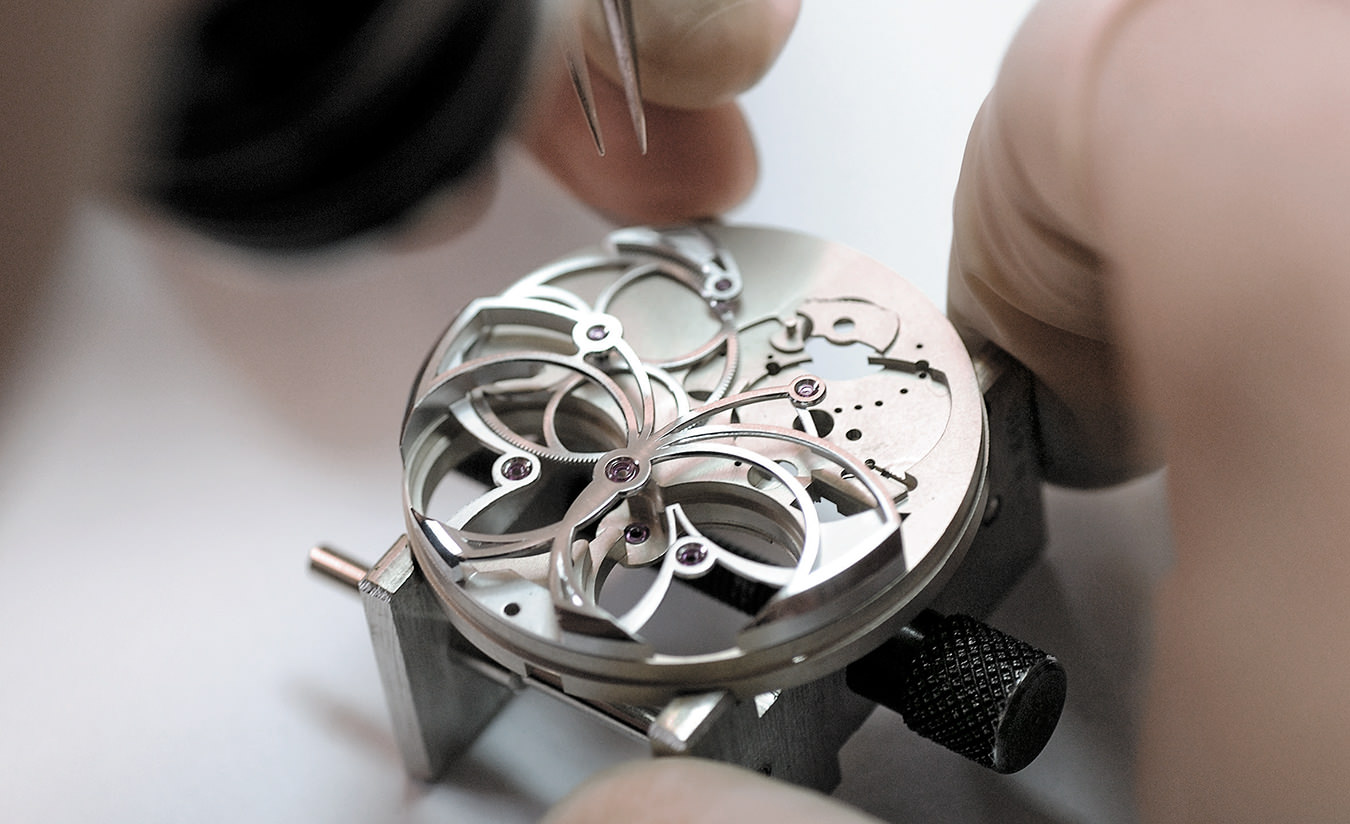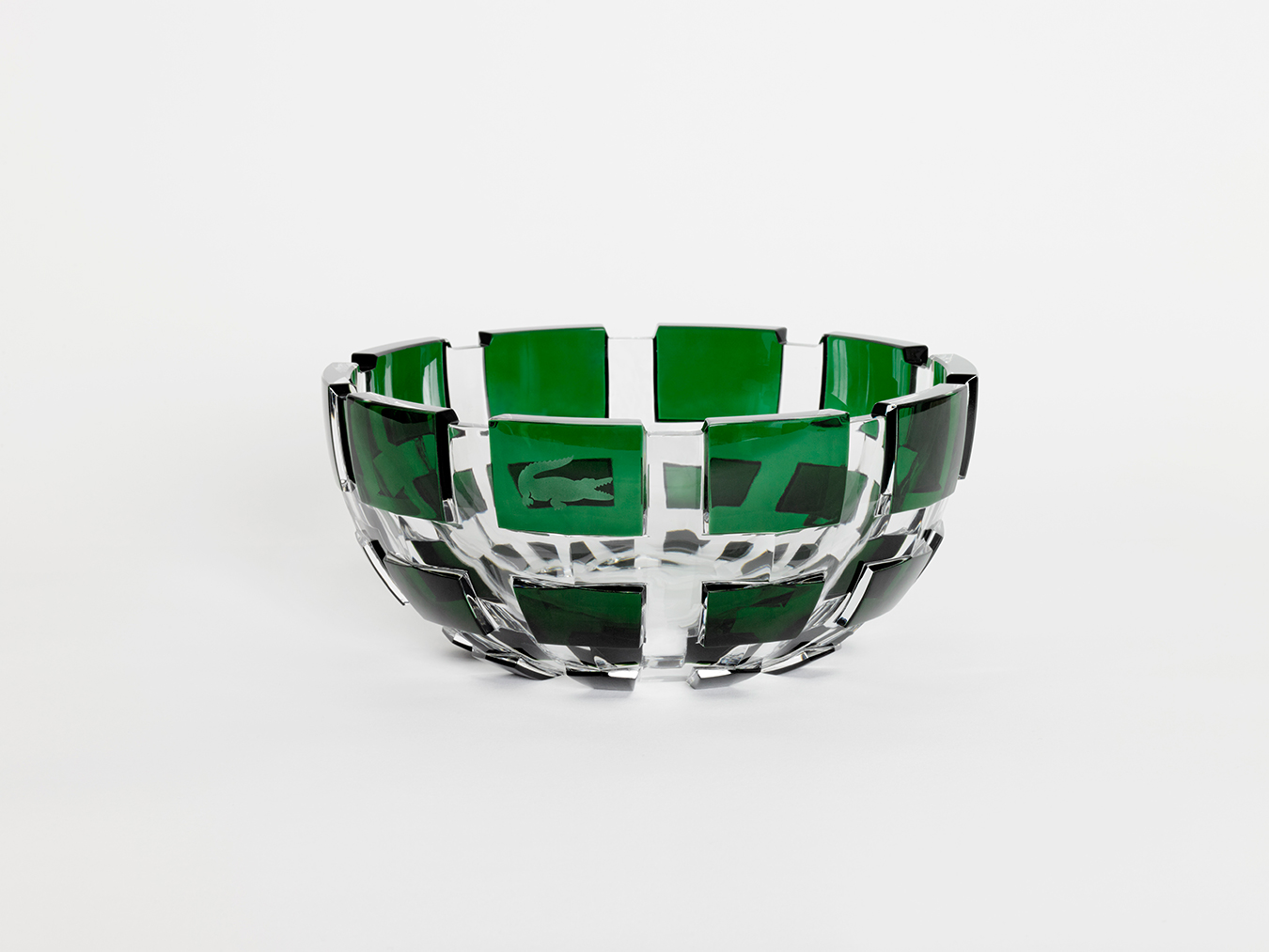-

HM1 was MB&F’s first creation. At the heart of the watch is a central tourbillon, surrounded by two overlapping dials, one for hours and one for minutes. The key figures behind HM1 were designer Eric Giroud, movement engineer Laurent Besse, and watchmaker Peter Speake-Marin.
-

Maximilian Büsser of MB&F.
-
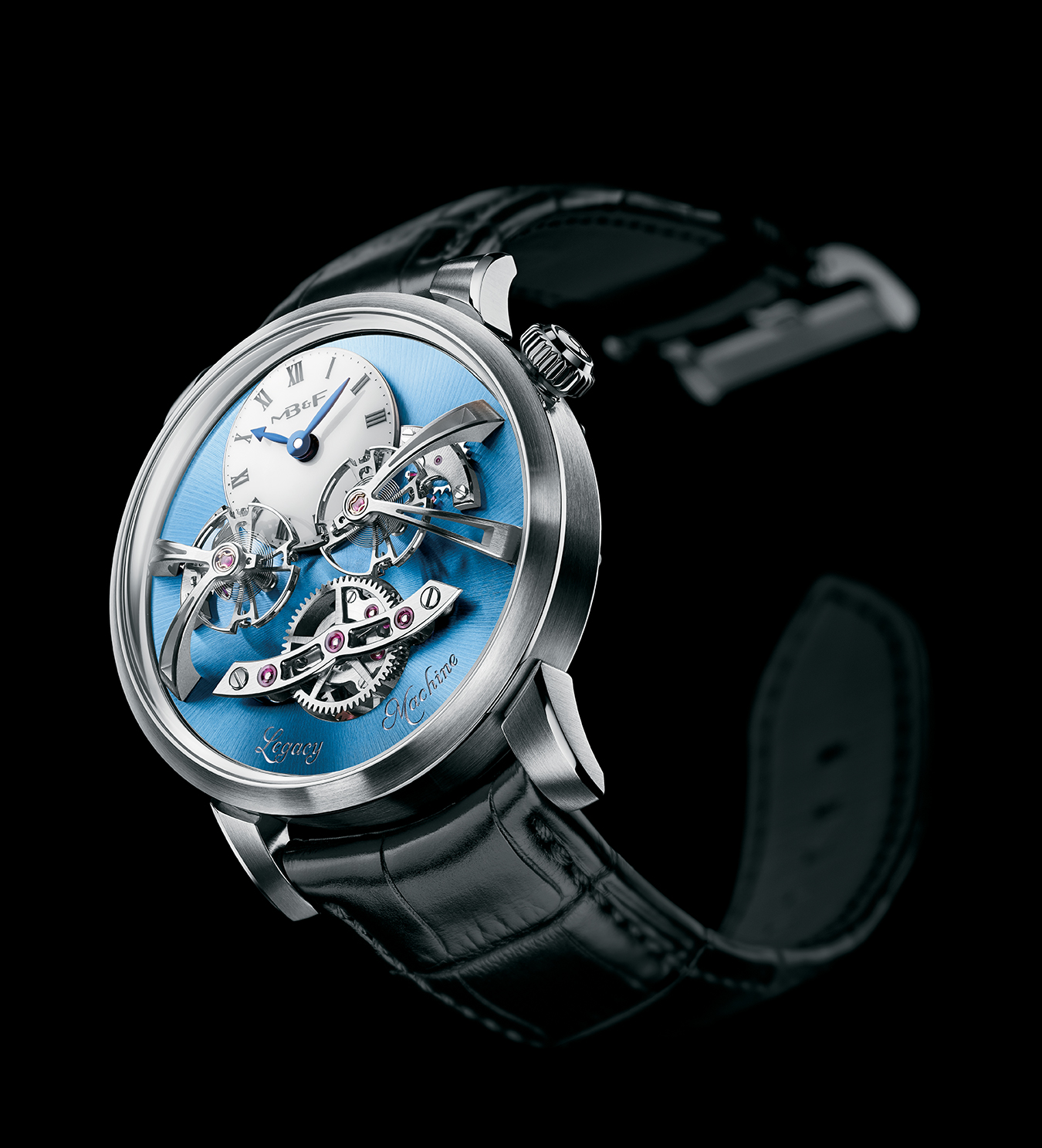
The MB&F LM2 has dual flying balances that are suspended above the dial. It was developed in partnership with watchmakers Kari Voutilainen and Jean-François Mojon.
-
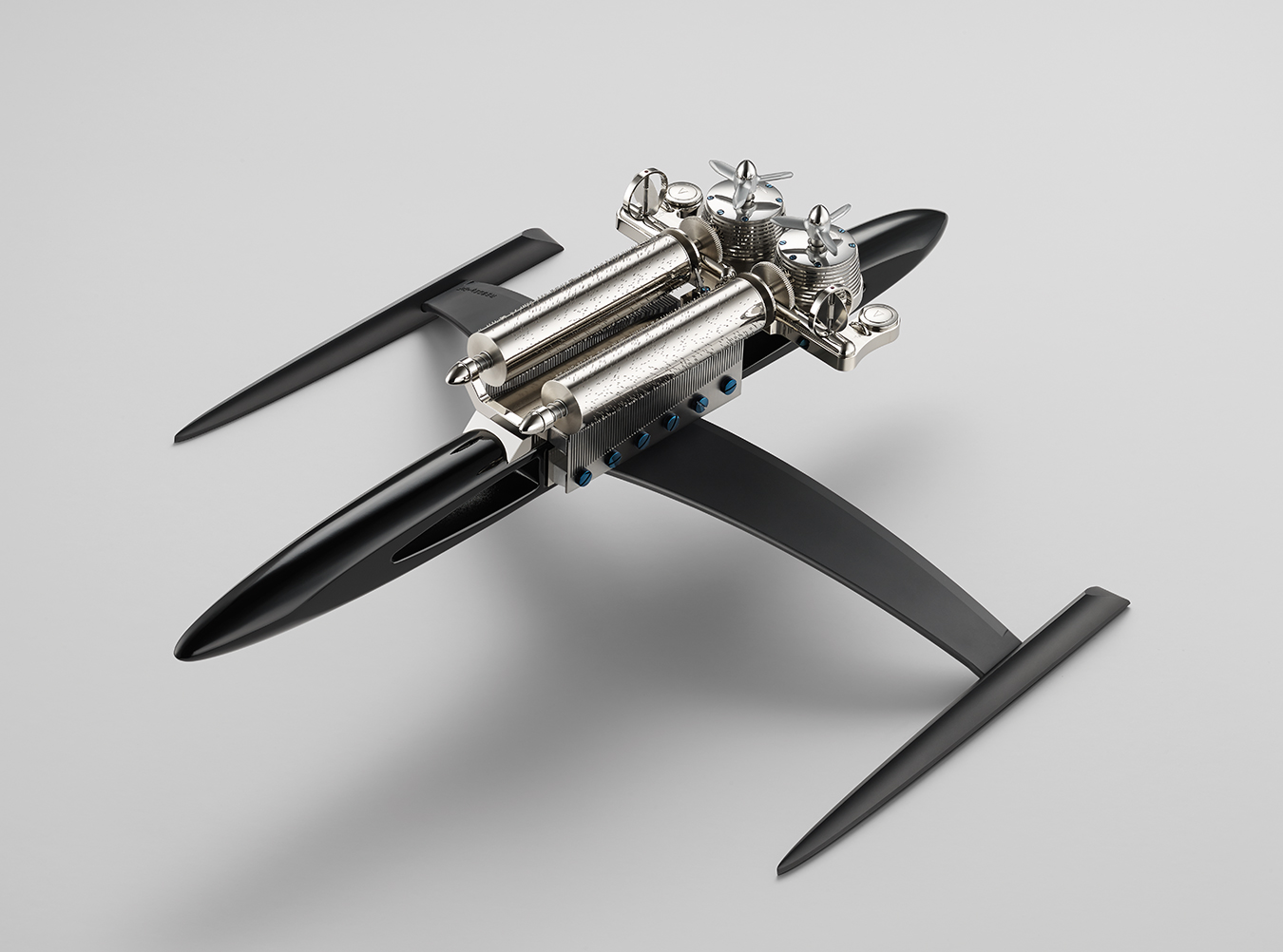
MB&F MusicMachine, a collaboration with music box manufacturer Reuge. Each cylinder plays three tunes: the left plays the Star Wars theme, the “Imperial March” from Star Wars: Episode V—The Empire Strikes Back, and the theme from Star Trek; the right plays Pink Floyd’s “Another Brick in the Wall”, Deep Purple’s “Smoke on the Water”, and John Lennon’s “Imagine”.
-
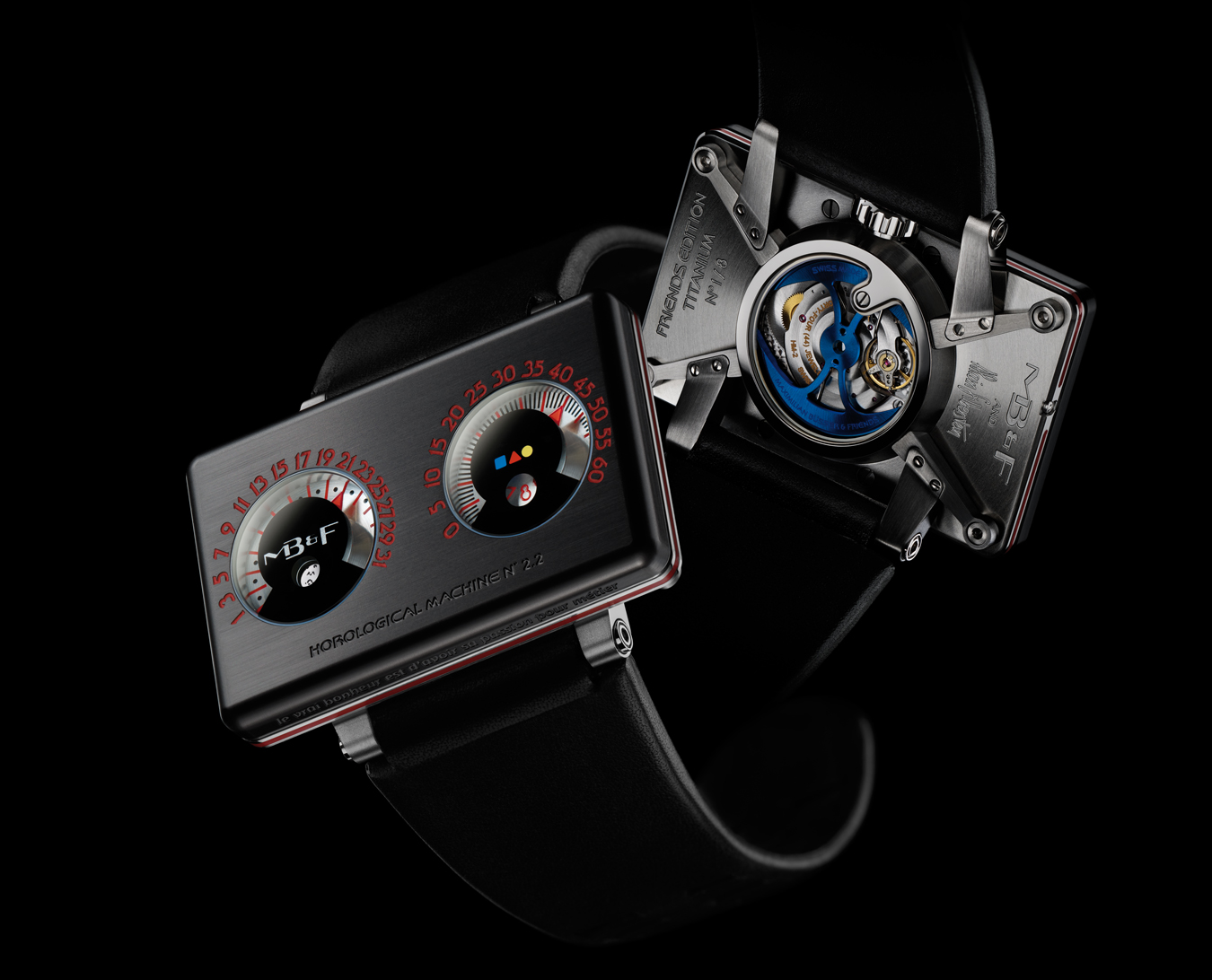
MB&F Horological Machine N°2.2, presented in November 2009 in collaboration with French artist and watch designer Alain Silberstein. Maximilian Büsser and Silberstein nicknamed the timepiece “the black box”.
-
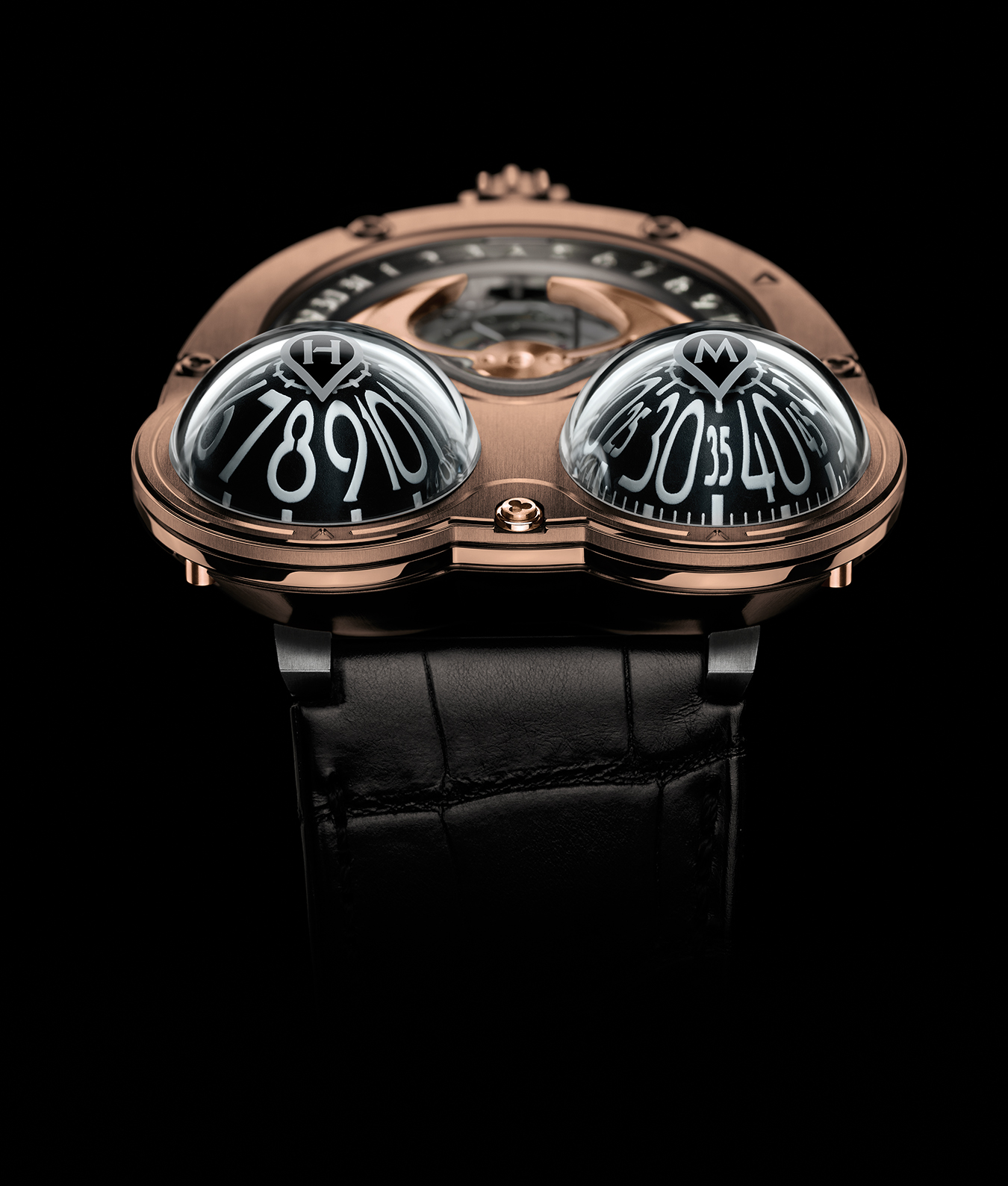
MB&F HM3 Fire Frog, which was created in a limited run of 10 pieces to celebrate the opening of the MB&F Beijing boutique.
-
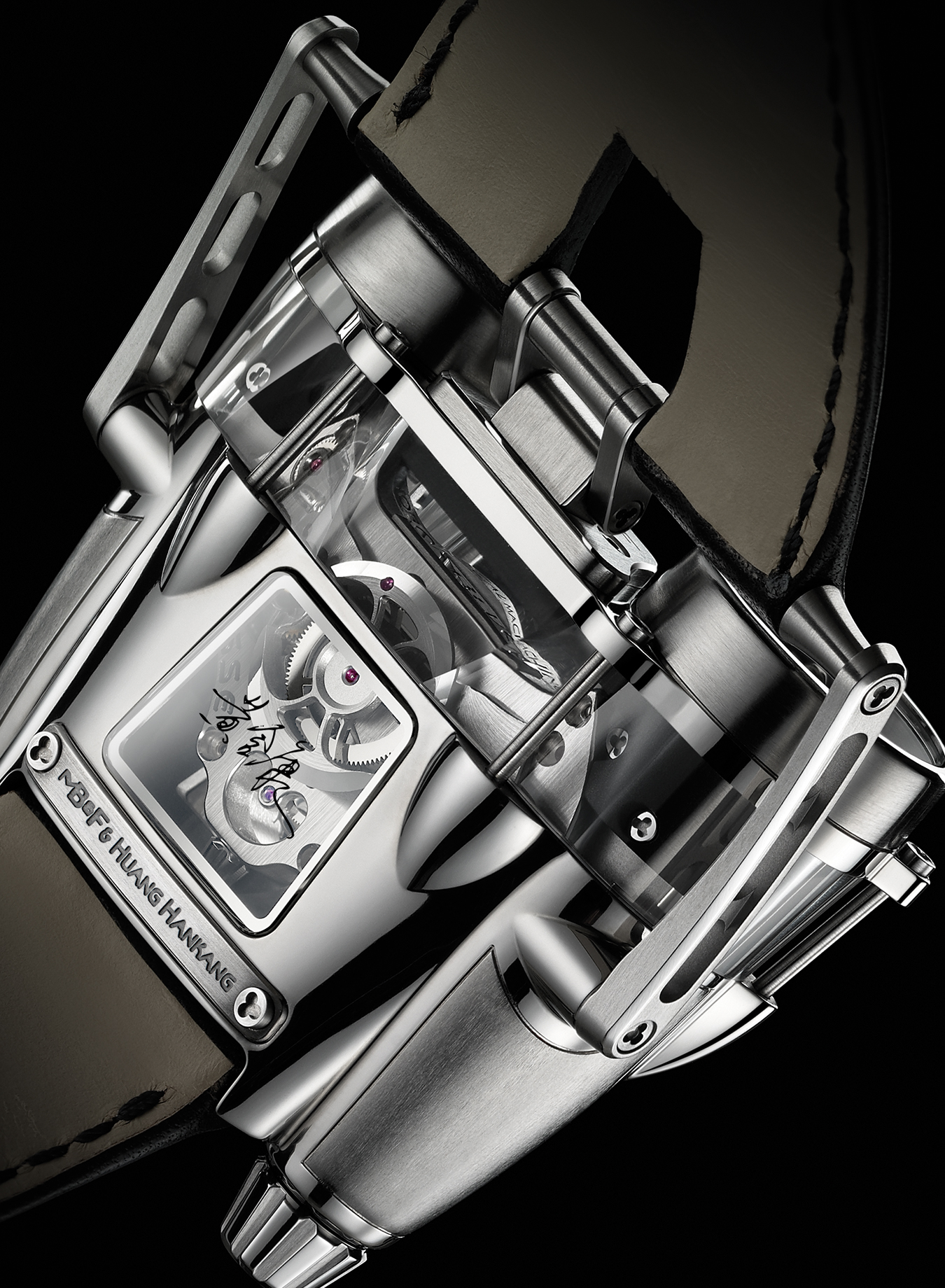
The aviation-inspired MB&F HM4 Thunderbolt, which blends high-tech titanium for its light weight and strength with a sapphire centre offering a view of the engine.
-

MB&F JwlryMachine, created in collaboration with Boucheron. Here, the three-dimensional jewelled owl is crafted in 18-karat white gold with amethysts, diamonds, and blue and violet sapphires.
-
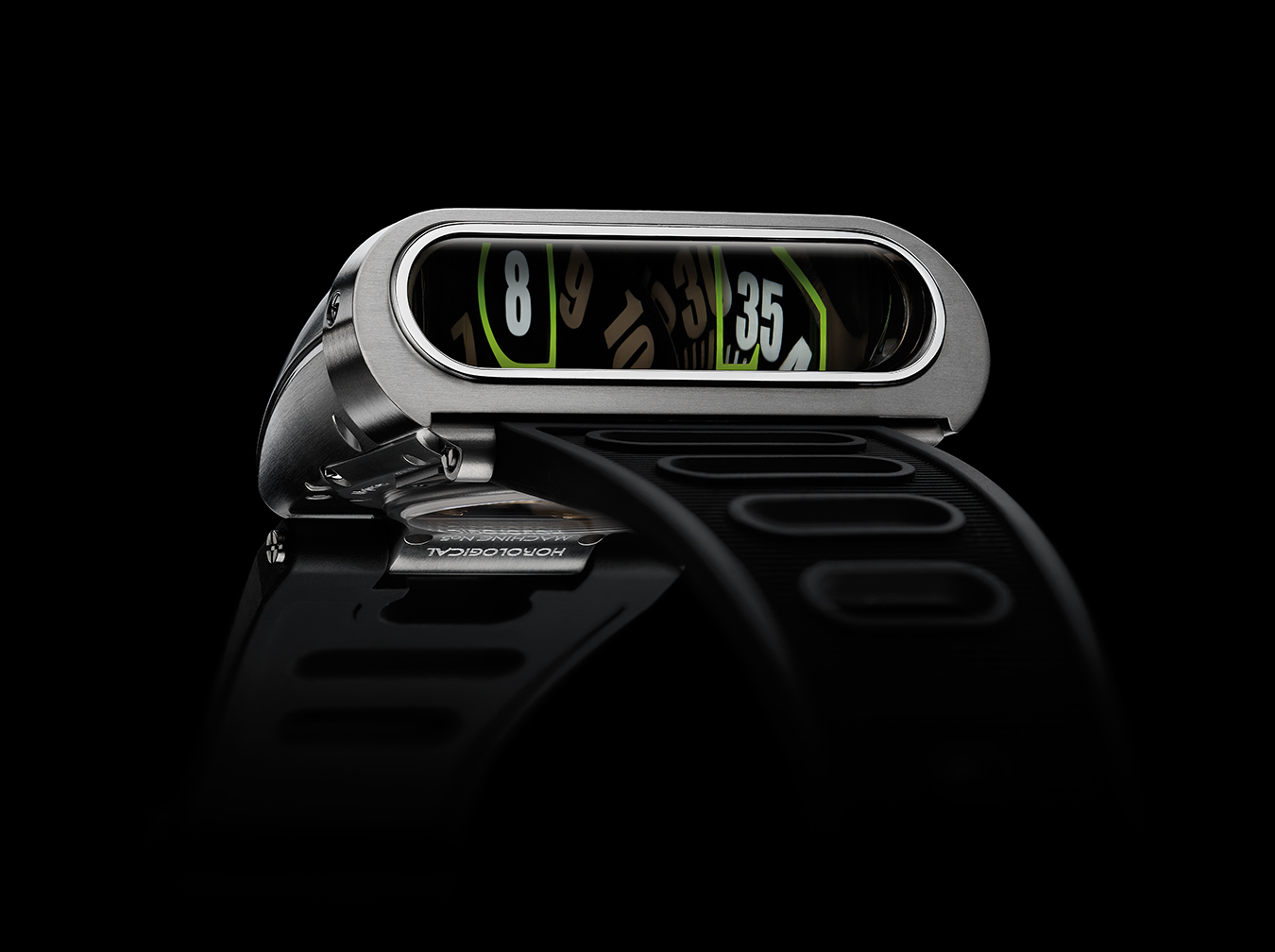
MB&F HM5, inspired by the Amida Digitrend watch from the 1970’s.
-

MB&F MoonMachine. Finnish watchmaker Stepan Sarpaneva reconfigured the HM3 Frog, adding a moon-phase indicator complication set in a scintillating firmament of northern stars.
MB&F Timepieces
Mad Max.
That feeling evinced by the famous madeleine in the first volume of Marcel Proust’s In Search of Lost Time is a vivid remembrance of everything sweet and magical about being a child. The French call it the la madeleine de Proust moment, and it’s the same feeling Maximilian Büsser is accustomed to evoking with his timepieces. Some of his MB&F watches, or “time machines” as he calls them, recall the Star Trek spaceships, Transformers, and Grendizer action figures of his childhood. “I was an only child, all alone in my room much of the time,” says Büsser. “So I had an incredibly rich, crazy imaginary life. I was Han Solo. I was Captain Kirk. I was saving the world on a daily basis in my room.”
Later in life, when Büsser began to design his own timepieces, he looked at the finished sketches and realized that they looked like spaceships. “I didn’t set out to do that, but I realized I was tapping into my childhood fantasies,” he says. The fantasy extends to how the watches are presented. They inhabit MB&F’s M.A.D. Gallery, an inauspicious storefront on the narrow cobblestone Rue Verdaine in the heart of Geneva’s Old Town, watches displayed among various animated Mechanical Art Devices. These include a brass and walnut Applause Machine that will clap for you at the touch of a button; Fingers Mk III, a disembodied hand (reminiscent of Thing from The Addams Family) that raps its fingers on the table as if bored or impatient; and a chrome MusicMachine that’s shaped like some kind of mother ship, with power generated by a gear train of a mechanical watch, and which plays, among other songs, the theme from Star Wars: Episode V—The Empire Strikes Back or “Smoke on the Water”. Made by contemporary designers Martin Smith and Nik Ramage, and in collaboration with music box manufacturer Reuge, these are serious objets d’art, and together with the watches, the MB&F repertoire resembles a fleet of aliens that have touched down from a distant universe.
Who but some radical upstart would indulge his childhood fantasies under the guise of a watch brand? Büsser would, but he’s no radical. After 15 years as an executive for heritage timepiece brands, he is a bona fide member of the traditional Swiss watchmaking establishment, and his creations are based on the principles of traditional mechanical watchmaking. They in fact represent its logical next step, an emblem of where that tradition stands at this point in time. “Today, we are talking about the art of watchmaking, not chronometry,” he says.
Chronometry refers to the precise measurement of time. All of the devices of mechanical watchmaking designed to that end were invented roughly between 1780 and 1850, considered the golden age of watchmaking. Today, we are in the midst of the second golden age of mechanical watchmaking, based largely on the refinement of those inventions while using better materials, new methods of fabrication, and, above all, new aesthetics. There have been more innovations in mechanical watchmaking over the past 15 years than in the previous 100. Watchmakers and horological brands have been crushing the barriers of traditional design and engineering, steadily improving upon the mighty gear train to create a new generation of superwatches.
It is not an exaggeration to say that Büsser, who is not himself a watchmaker, was a pioneer of this movement. His serendipitous introduction to watchmaking began in Switzerland when his parents invited him to pick out a timepiece for his 18th birthday. His budget in 1985 was 700 Swiss francs ($420 Canadian). Büsser, then in his first year of a degree in microtechnology engineering at the University of Lausanne, admired the watch of one of his classmates, a Rolex. Büsser asked, “How much is it worth?” He was shocked by the answer: 4,750 Swiss francs ($2,830 Canadian). “I was working as a cinema usher in the evenings and selling hi-fi equipment on the weekends,” he says. “What he paid for that watch was more than a year’s salary for me!” When it came time to do a case study thesis in his third year, Büsser chose watchmaking as his theme—because, he says, “I just didn’t get it.”
At the time, the mechanical watch industry was still limping from the blow delivered by quartz technology introduced by the Japanese in the 1970s; quartz was cheaper and more accurate, and many of the traditional mechanical watch brands were nearly bankrupt. After graduating in 1991, Büsser had a chance meeting with Henry-John Belmont of Jaeger-LeCoultre on a ski slope, whom he had once interviewed for a school case study. A week later, Belmont invited Büsser to the manufacturer for a job interview. “I thought, why not?” says Büsser. “So I took my battered car up to the Vallée de Joux. He [Belmont] didn’t ask me a single question, but for three hours showed me around the Jaeger-LeCoultre facility. Then he said, ‘I’m creating a job for you. I need a product manager.’” Büsser accepted the challenge and spent the next seven years participating in the company’s makeover. “I learned two things at Jaeger-LeCoultre: how to work—it’s not something you learn at university—and I learned to really understand how watchmaking works,” he says.
In 1998, Büsser was recruited by a headhunter searching for someone to run the watchmaking division of Harry Winston. He got the job over 40 other candidates. “They [Harry Winston] said, ‘You’re 10 years too young, but we think you can do this,’ and gave me the job,” says Büsser, who was 31 at the time. “What I didn’t know was that Harry Winston’s timepiece division was near bankrupt, and two weeks after I started, it went on the market for sale. It was either sink or swim.”
At Harry Winston, Büsser honed his gift for collaboration and kindled his wild side, initiating the Opus series. Beginning with Opus 1, the concept was to produce a watch series in a credited partnership with an independent watchmaker. It would represent a new watchmaking invention of some kind, and it would be produced in very limited editions with the watchmaker’s name appearing alongside the Harry Winston logo. This in itself was a first for many of the participating master watchmakers who had long toiled in obscurity for the big brands. It also brought a level of recognition to independent watchmakers unheard of since the days of Abraham-Louis Breguet, who invented the tourbillon in 1801.
“Working on Opus introduced me to the idea of taking risks and following my gut instead of my head,” says Büsser. In 2005, he left Harry Winston to start MB&F. Maximilian Büsser and Friends is based on a single ideal: to assemble dedicated collectives of talented horological artisans, technicians, and professionals—Jean-François Mojon, Olivier Purnot, and François Bernhard to name a few (many of whom he met during his first 15 years at Jaeger-LeCoultre and Harry Winston)—to design and craft a radical and original horological masterpiece each year. “I wanted to indulge my passion for working with the most talented independent horological professionals,” he says. “And I wanted to create watches without bothering about what clients wanted.”
Büsser, consciously or not, hit a sweet spot. The watches were a huge success from the start. In order to help finance the production of his first series, he persuaded six retailers from around the world to preorder and prepay for the pieces. The buzz created by MB&F’s crazy Horological Machines (HM1 through HM5) and Legacy Machines (LM1 and, this year, LM2) is the equivalent of millions in advertising exposure. Even the traditional watch establishment applauded them. Last year at the Grand Prix d’Horlogerie de Genève, the LM1 picked up an unprecedented two awards: Men’s Watch Prize and the Public Prize.
Celebrated independent watchmaker Kari Voutilainen, who collaborated on the Legacy Machines, describes them as reinterpretations of significant horological inventions by the greatest watchmakers in history. What sets them apart is design. In a radical re-presentation of existing technology, the movement’s key components, including the escapement and balance wheel—and in the case of LM2, two balance wheels and a differential wheel—are dramatically featured on the dial rather than hidden inside the case. “Having a vision is one thing, but Max knows how to make things happen,” says Voutilainen. “No idea is too crazy for him, and a little bit of craziness is good for the life. It makes life sweet.”

